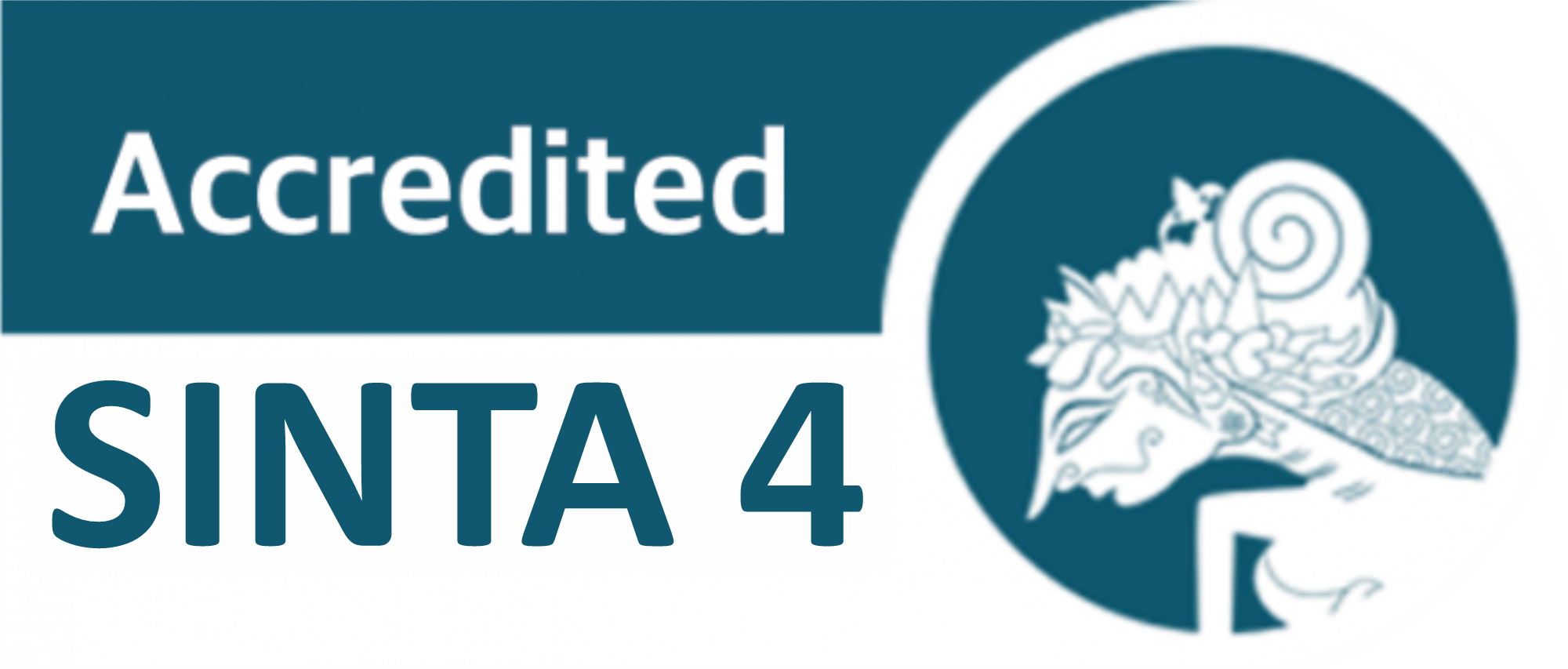POLA PENCARIAN INSPIRASI MAHASISWA DKV PADA TAHAP AWAL (EARLY PHASE DESIGN) PERANCANGAN DESAIN KEMASAN MENGGUNAKAN INTERNET
DOI:
https://doi.org/10.24114/gr.v12i2.49405Keywords:
design, inspiration, creativity, earlyphaseAbstract
In the design process, inspiration, whether in the form of words or visuals, plays a significant role that can be both beneficial and lead to design fixation. This research aims to examine the patterns of inspiration-seeking by Visual Communication Design (DKV) students in the initial stage of packaging design using the internet. The study employs a quantitative method, with DKV students as the research subjects. Cluster random sampling is used to select third-year DKV students at ITERA. Data is collected through an online questionnaire, and descriptive analysis is applied for data analysis. The results indicate that during the search for packaging design inspiration, students tend to prefer visually-oriented websites they visit first. Furthermore, on the second and third websites visited, the proportion of descriptive explanations (concepts and design explanations) gradually increases. This suggests that, in the initial stage, students tend to prioritize visual aspects over explanations, and later consider narratives or conceptual explanations. Some frequently visited websites include Pinterest, Behance, and Freepik. Additionally, there is no significant difference in the use of concrete and abstract keywords in the search.Keywords: design, inspiration, creativity, earlyphase.AbstrakPada proses perancangan desain, inspirasi baik dalam bentuk kata ataupun visual memiliki peran penting yang bermanfaat dan menimbulkan design fixation. Penelitian dilakukan untuk mengkaji pola pencarian inspirasi mahasiswa DKV (Desain Komunikasi Visual) pada tahap awal (early design) perancangan desain kemasan menggunakan internet. Penelitian ini menggunakan metode kuantitatif, dimana subjek penelitian adalah mahasiswa DKV. Teknik pengambilan sampel menggunakan cluster random sampling pada mahasiswa DKV tingkat 3 di ITERA. Pengumpulan data menggunakan kuesioner online, sedangkan teknik analisis data menggunakan analisis deskriptif. Hasil menunjukkan bahwa dalam proses pencarian inspirasi desain kemasan, mahasiswa lebih memilih laman yang lebih berorientasi visual pada situs yang pertama kali mereka kunjungi. Lebih lanjut, pada situs kedua dan ketiga yang dikunjungi, proporsi deskripsi penjelasan (konsep serta penjelasan sebuah desain) secara bertahap meningkat. Hal ini menunjukkan bahwa mahasiswa cenderung lebih memilih mempertimbangkan aspek visual dibandingkan penjelasan untuk tahap awal, selanjutnya dengan melihat narasi atau penjelasan konsep. Beberapa situs yang paling sering dikunjungi diantaranya adalah Pinterest, Behance, dan Freepik. Selain itu, tidak ada perbedaan signifikan antara penggunaan jenis kata konkrit dan abstrak dalam pencarian.Kata kunci: desain, inspirasi, kreativitas, tahap-awal. Authors:Muhammad Hajid An Nur : Institut Teknologi SumateraPutri Kholida : Institut Teknologi Sumatera References:Adiluhung, H. (2021). Proses Kreatif Tim Desainer Rancang Bangun Kendaraan Tempur Kelas Ringan Pt Pindad. Gorga: Jurnal Seni Rupa, 10(1), 10-14.Agung, M., Asril, A., Syafwandi, S., & Movitaria, M. A. (2021). Redesign Logo Cafe dan Resto Rumah Bako Payakumbuh. Gorga: Jurnal Seni Rupa, 10(2), 295-301.Nur, M. H. A. (2019). Pola Penggunaan Internet Mahasiswa Desain sebagai Sumber Inspirasi pada Tahap Awal Desain (Early Phase Design). Productum: Jurnal Desain Produk (Pengetahuan dan Perancangan Produk), 3(5), 165-168.Goldschmidt, G., & Smolkov, M. (2006). Variances in the Impact of Visual Stimuli on Design Problem Solving Performance. Design Studies, 27(5), 549-569.Hwang, D., Choi, B., Bae, S., & Park, W. (2021). Mitigating Design Fixation: A Visualization Tool for Enhancing Situation Awareness. Journal of Mechanical Design, 143(6), 061402.Lego, D., Azis, A. C. K., Medan, J. W. I. P. V., & Tuan, P. S. (2022). Ilustrasi T-Shirt Gunnery Artwear. DEKAVE: Jurnal Desain Komunikasi Visual, 12(2), 116-125.Linsey, J., Tseng, I., Fu, K., Cagan, J., Wood, K., & Schunn, C. (2010). A Study of Design Fixation, Its Mitigation and Perception in Engineering Design Faculty. Journal of Mechanical Design - J MECH DESIGN, 132.Moreno, D. P., Blessing, L. T., Yang, M. C., Hernández, A. A., & Wood, K. L. (2016). Overcoming Design Fixation: Design by Analogy Studies and Nonintuitive Findings. Artificial Intelligence for Engineering Design, Analysis and Manufacturing, 30(2), 185“199.Mougenot, C., Bouchard, C., & Aoussat, A. (2007). CREATIVITY IN DESIGN - HOW DESIGNERS GATHER INFORMATION IN THE" PREPARATION" PHASE. Proceedings of IASDR 2007, pp. 11-15.Mougenot, C., Bouchard, C., AOUSSAT, A., & Westerman, S. (2008). Inspiration, Images And Design: An Investigation of Designers™ Information Gathering Strategies. J. Design Research, 7(4), 331“351.Pasaribu, M. E., & Atmojo, W. T. (2023). Puzzle Sebagai Sumber Inspirasi Penciptaan Motif Batik. Gorga¯: Jurnal Seni Rupa, 12(1), 01.Toh, C., Miller, S., & Kremer, G. (2014). Mitigating Design Fixation Effects in Engineering Design Through Product Dissection Activities. Design Computing and Cognition ™12, 95“113.Vasconcelos, L. A., Cardoso, C., Saaksjarvi, M., Chen, C.-C., & Crilly, N. (2017). Inspiration and Fixation: The Influences of Example Designs and System Properties in Idea Generation. J. Mech. (Journal of Mechanical Design) Des 139(3).Zam, R., Dharsono, D., & Raharjo, T. (2022). Transformasi Estetik Seni Kriya; Kelahiran Dan Kriya Masa Kini. Gorga¯: Jurnal Seni Rupa, 11(2), 302.Downloads
Published
How to Cite
Issue
Section
License
Copyright (c) 2023 Muhammad Hajid An Nur, Putri Kholida

This work is licensed under a Creative Commons Attribution-ShareAlike 4.0 International License.
Copyright
Authors published in this journal agree to the following terms:
- The copyright of each article is retained by the author (s).
- The author grants the journal the first publication rights with the work simultaneously licensed under the Creative Commons Attribution License, allowing others to share the work with an acknowledgment of authorship and the initial publication in this journal.
- Authors may enter into separate additional contractual agreements for the non-exclusive distribution of published journal versions of the work (for example, posting them to institutional repositories or publishing them in a book), with acknowledgment of their initial publication in this journal.
- Authors are permitted and encouraged to post their work online (For example in the Institutional Repository or on their website) before and during the submission process, as this can lead to productive exchanges, as well as earlier and larger citations of published work.
- Articles and all related material published are distributed under a Creative Commons Attribution-ShareAlike 4.0 International License.
License
Gorga : Jurnal Seni Rupa is licensed under a Creative Commons Attribution-ShareAlike 4.0 International License.










